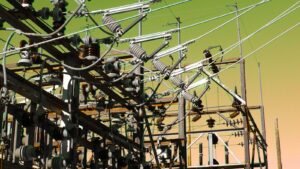Core Cleantech: Driving Wind Costs Down
The wind power sector has been somewhat overshadowed by the unprecedented drop in the cost of solar power in recent years. This blog looks to bring wind back into the picture. In certain geographies, this type of renewable energy generation has immense advantages, and thus also innovation opportunities.
The Global Wind Energy Council (GWEC) recently released its annual report, and the review of 2016 shows that wind energy has passed significant milestones once again. The sector kept up its double-digit growth pattern over 2016, with a total of 54GW added to global wind energy capacity. China continues to lead the group despite slowing growth of electricity demand, followed by the US, Germany, India, and Brazil. Continued adoption has been accompanied by the reduction of levelized cost, especially in offshore wind. The U.K. saw costs dropping to £97/MWh, which is below the £100/MWh benchmark – three years ahead of the government’s schedule. In addition to supporting wind farm projects through vehicles such as the recently acquired Green Investment Bank, the U.K. government has provided continued support for innovation in the wind sector. This is perhaps best exemplified by the Low Carbon Innovation Coordination Group (LCICG) allocating £100 million to foster innovation from SMEs and research groups (2011-15)[1].
In the last few years, a good proportion of cost reductions in wind energy has been attributable to innovation in the design of the turbines and tower structures, whereas looking forward, cost reductions are more easily achieved through innovation in construction and within the supply chains for wind farms. Offshore wind farms’ installation costs still shape a significant proportion of wind energy costs (see diagram below) – which provides a new target for savings. Improving efficiencies in the construction and installation of offshore wind farms is predicted to have the greatest impact in driving down installed costs (IRENA, 2016)[2]. An example of cutting edge innovation here is Global Cleantech One to Watch company, Ideol. The company develops floating offshore wind turbine foundations that require none of the cost-intensive ocean floor foundations. The structure can be fully assembled at the harbor, therefore dramatically decreasing installation time, cost and personnel needs. The company has raised about $12 million to date and is now expanding geographically using strategic partnerships such as with Balfour Beatty in the U.K.

The Innwind project, an EU-funded, public-private, multinational offshore wind innovation programme is coming to a close in 2017, transitioning from research and development to a commercialization phase. Among the innovations coming out of Innwind are hardware improvements to rotor aerodynamics, blade dynamics and offshore support structures, as well as achievements in wind profile data analytics and modelling software. The findings, and related product launches, are currently in the process of being approved by the European Union.
Mainstream horizontal wind turbine technology is still yielding improvements. Innovators have improved wind farm output by increasing the size of turbine blades, in large part enabled by advanced materials. Seeking blades equally as strong but dramatically lighter than previous ones, most manufacturers have turned to specialized carbon fibers. Innovators N12 Technologies and Cnano Technologies are examples of companies that have developed carbon nanotube technology for composite materials with wide applications, including the wind energy sector.
Given that there is already 486,790MW-installed wind turbine capacity on- and offshore globally (as of the end of 2016), some innovators aim at improving the capacity factor of existing wind farms. The development and implementation of specialized LiDAR sensors to accurately measure the wind flow approaching a turbine, allowing the blades to be adjusted to optimize energy capture, is taken on by a few innovators in the cleantech sphere. UK start-up ZephIR Lidar does exactly that, working together with industry leaders RWE Innogy UK, E.ON and EDF Energy Renewables. Axys Technologies provides floating wind and weather monitoring systems that similarly help to increase energy capture, but also dramatically bring down O&M costs by providing real-time insight into weather conditions and improved inputs for wind modelling.
As the wind sector matures, more emphasis is put on reducing O&M costs, and the market is getting competitive. For example, the cost of maintenance for, and the reduction of, wind turbine inefficiency through erosion processes is now becoming an important factor in wind project cost-analyses. Due to the particularly harsh environmental conditions to which offshore wind farms are exposed, new formulations both for coatings and composite resins are required. A large research project aimed at discovering innovation opportunities in this field is BLEEP (Blade Leading Edge Erosion Programme), that has brought together research groups and big wind energy players. Newly emerged data giving experimental evidence to how even minor leading-edge erosion can cause annual energy production losses of almost 2% highlights the potential for innovators producing durable coatings.
Onshore, we have witnessed a new innovative turn for the industry – supplying household scale wind turbines as a service. United Wind provides each customer with full wind turbine installation on their property, plus O&M cost coverage, at a monthly fixed rate for supplying the customers with all electricity needs. In 2016, the venture arms of energy companies Total and Statoil have shown interest in the business model by leading two funding rounds for the company, allowing United Wind to expand its ‘WindLease’ services further and to explore how excess electricity can better feed into the grid. For its innovative solutions, the company is part of the 2017 Global Cleantech 100. One Energy also works within on-site, onshore wind – but on the large commercial scale. The company works on ‘Wind for Industry’ projects that aim to achieve a significant reduction of an industrial facility’s electrical consumption from the grid. In January 2017, the company received $80 million in debt funding from Prudential Capital Group, which will help a significant expansion and more projects.
Following in the footsteps of recent innovation in effective off-grid solar energy applications, some companies are similarly promoting small wind turbines for household energy self-sufficiency. The key here is to make wind turbines more affordable and durable. Pika Energy and Avant Garde Innovations (AGI) both have taken on this quest, with the latter’s small wind turbine promising to deliver 1/3 the cost of current small wind power plants.
Wind energy is a fairly mature global market, but there’s still a lot of space left for innovators to help drive down the costs. Neither private nor public investment flows have ceased, so we expect further developments that will help the wind energy industry continue its record growth!
[1] https://www.gov.uk/government/uploads/system/uploads/attachment_data/file/319026/bis-14-880-support-for-the-offshore-wind-industry-overview.pdf


